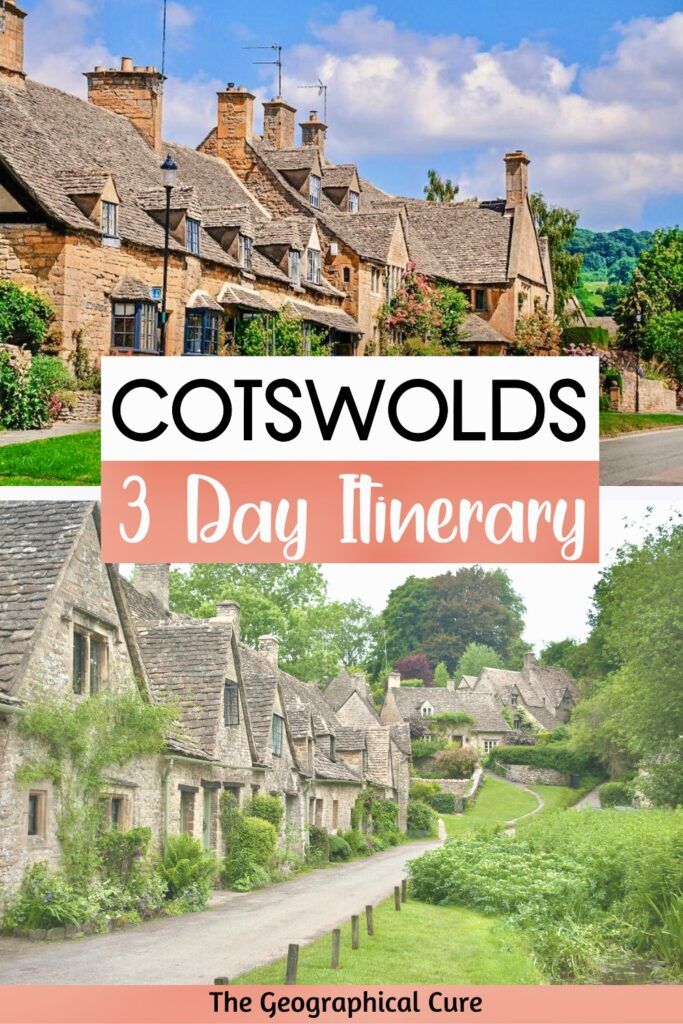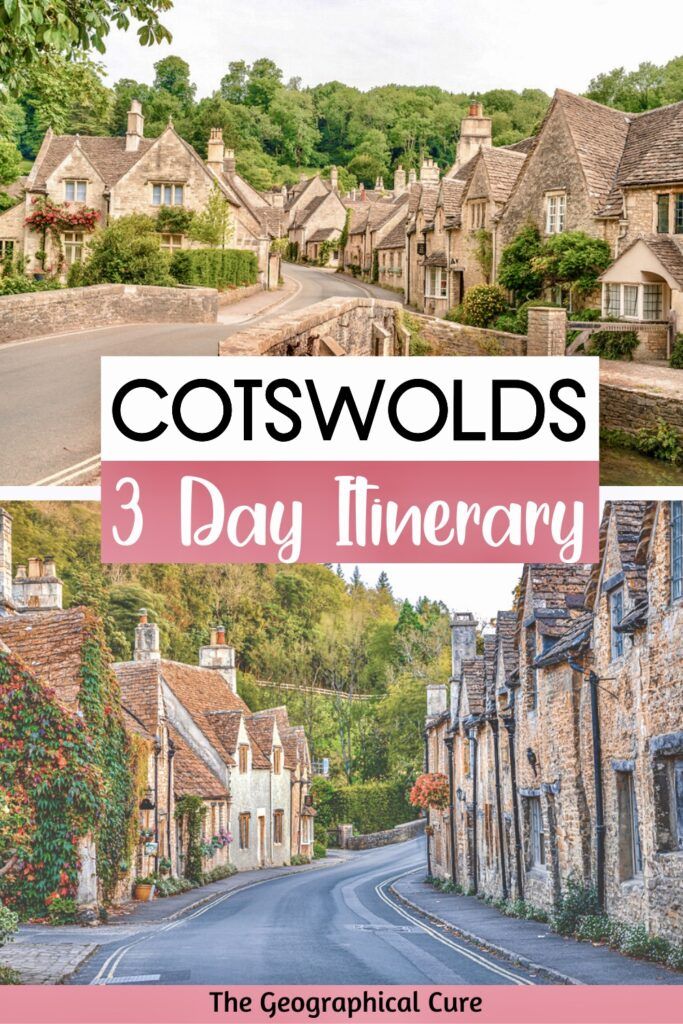Tired of London and looking for bucolic? Head to the Cotswolds with this 3 day itinerary.
The Cotswolds are home to time lost stoney villages, quaint thatched roofed homes, and the enduring appeal of the English countryside.
The medieval architecture and ancient pubs are just so cozy and compelling. Flowers decorate shops and crawl over stone walls. Even the names of the villages and pubs are chocolate-box charming.
Best of all, you don’t have to come with a “to do list.” Above all, you visit the Cotswolds to stroll around the historic gold-hued villages. Or to hike in the rolling hills, lush meadows, and picturesque valleys.
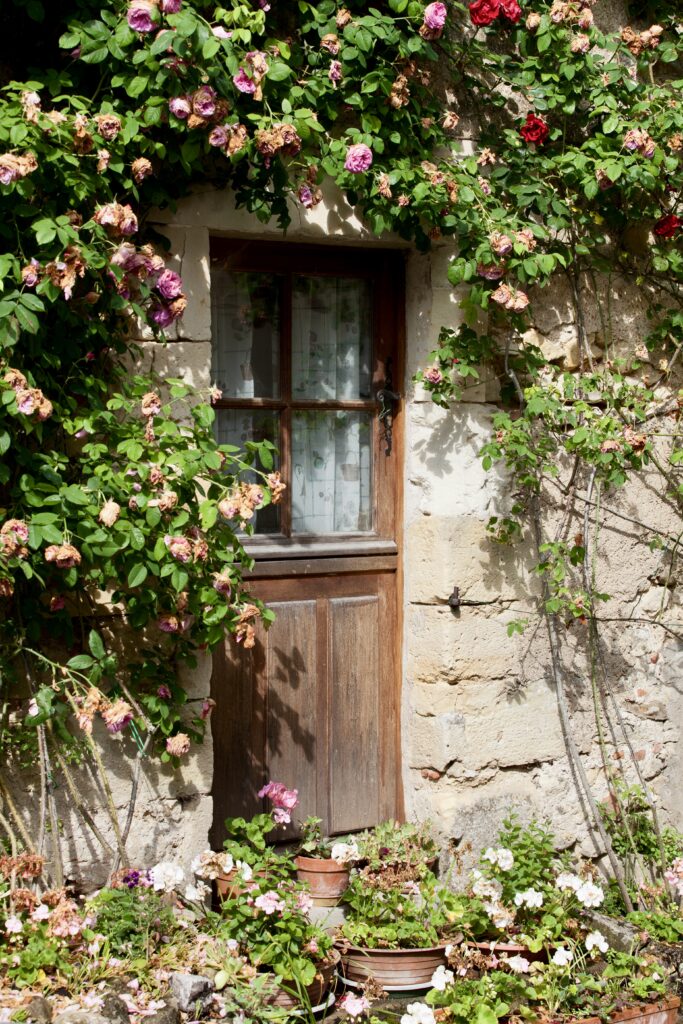
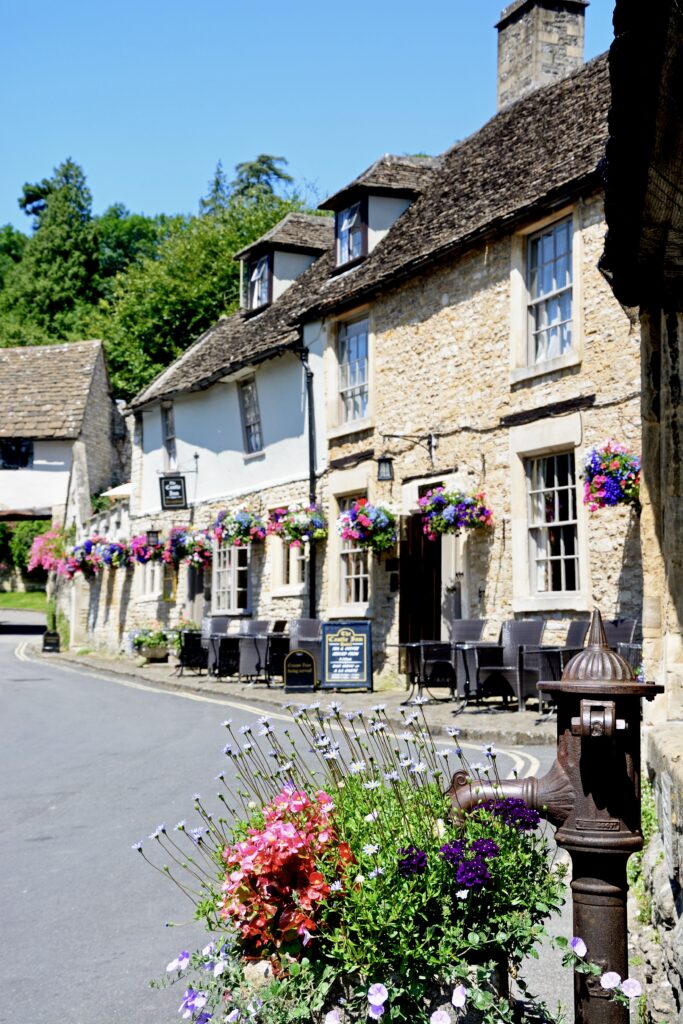
3 Days In The Cotswolds At A Glance
Here’s a snapshot of what you can see with this 3 days in the Cotswolds itinerary:
- Day 1 of the Cotswolds itinerary 3 days: Bibury, Bourton-on-the-Water, Burford
- Day 2 of the Cotswolds itinerary 3 days: Stow-on-the-Wold, Upper Slaughter, Lower Slaughter
- Day 3 of the Cotswolds itinerary 3 days: Chipping Campden, Broadway and/or Castle Combe
The best way to get around, by far, is to drive. I recommend basing yourself in Stow-on-the-Wold or Chipping Camden. (More on the below in the tips sections)
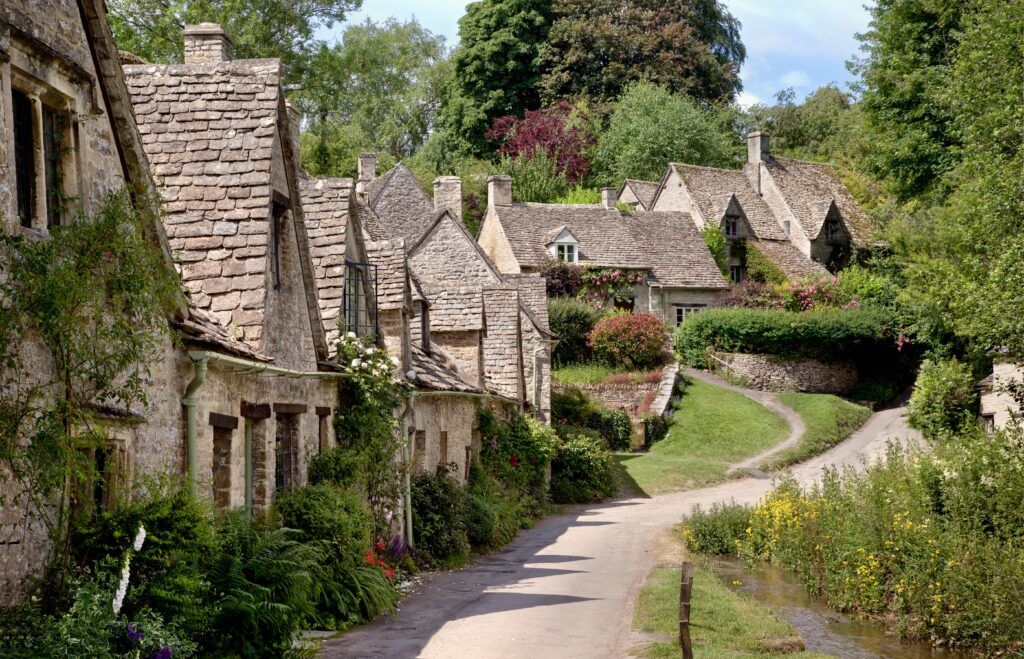
3 Days In The Cotswolds Itinerary
There are many routes you can take to get around the Cotswolds. But this is the order I would visit the must-see villages.
Sadly, you simply can’t see them all on one trip. But I guarantee you’ll want to return to this fairytale region!
Day 1: Bibury, Bourton-on-the-Water & Burford
Begin your Cotswolds adventure with the “B” villages. Because of their beautify and proximity to London, these villages are among the most touristy of the Cotswolds gems.
But they are touristy for a reason. They’re absolutely lovely.
Start in Bibury. It’s a town that William Morris described as “the most beautiful village in England.”
The main attraction in this tiny hamlet is Arlington Row. It’s a charming lane with rustic 17th century weaver’s cottages near the River Coin. It’s one of the most photographed places in all of England.
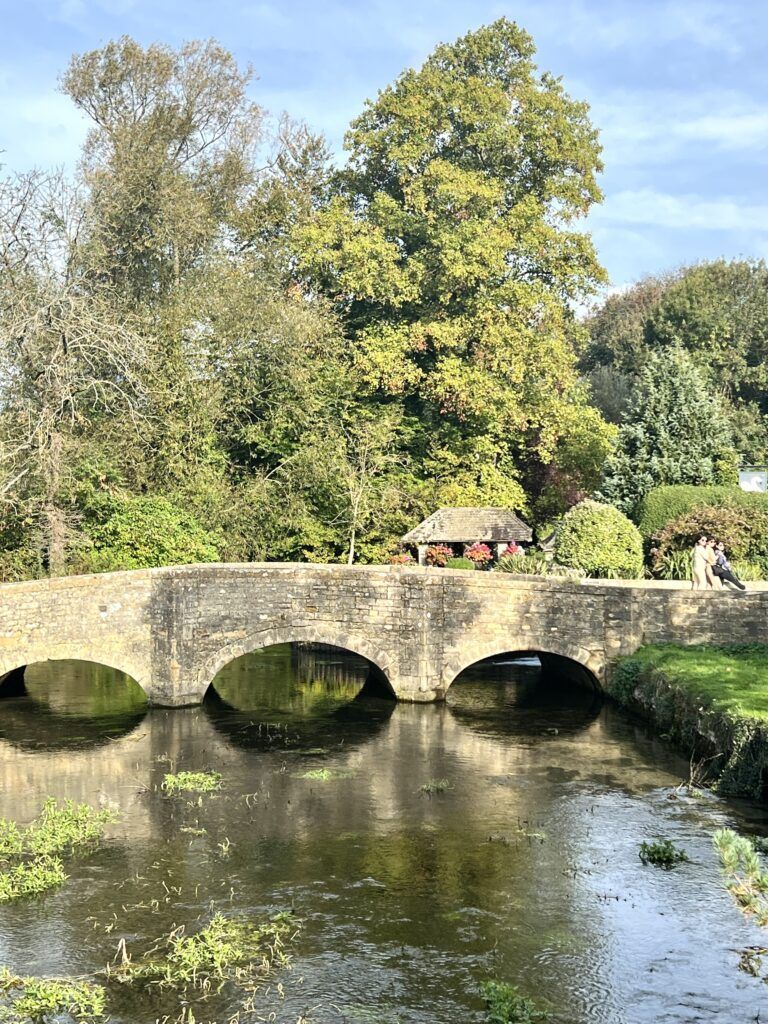
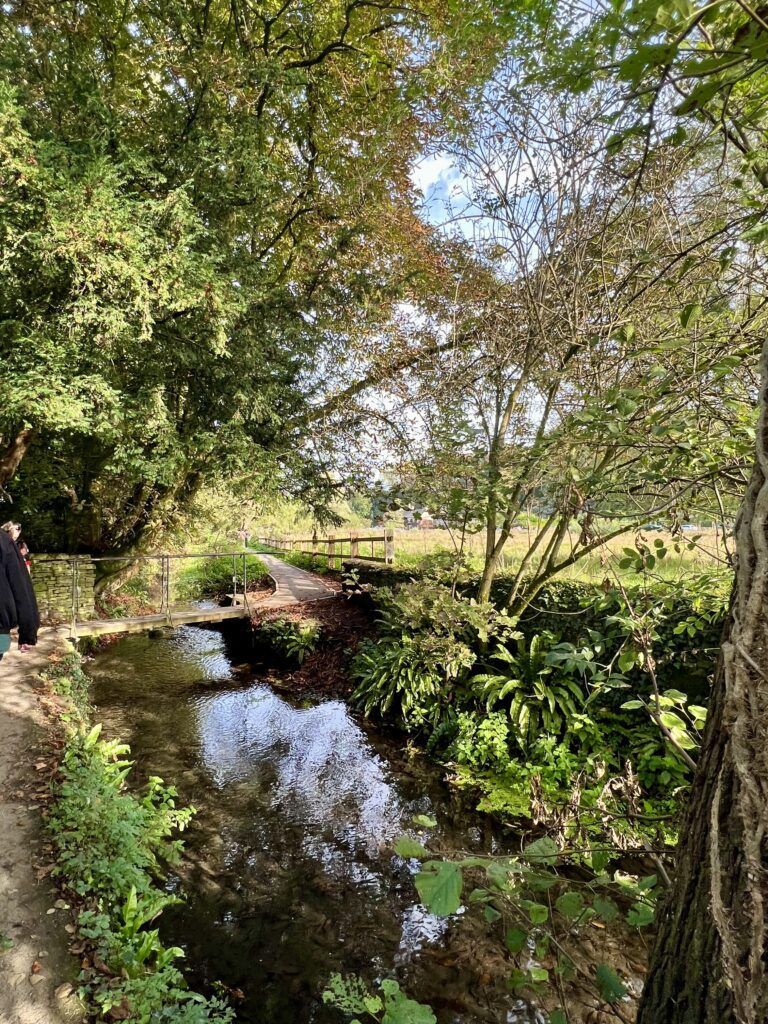
If you need tea or coffee, the Swan Inn is the ideal place. There’s also a small deli near Arlington Row, with a great fish shop.
When you’re done in Bibury, head to Chedworth Roman Villa about 10 minutes down the road.
It’s an extremely well-preserved Roman villa from the 2nd century A.D. It’s renowned for its beautiful mosaics, in mythological and geometric patterns.
The, it’s just a short hop to Bourton-on-the-Water, often called the “Venice of the Cotswolds.” It’s the quintessential Cotswold village.
In Bourton-in-the-Water, tiny footbridges span the River Windrush. High Street is dotted with all manner of shops to explore.
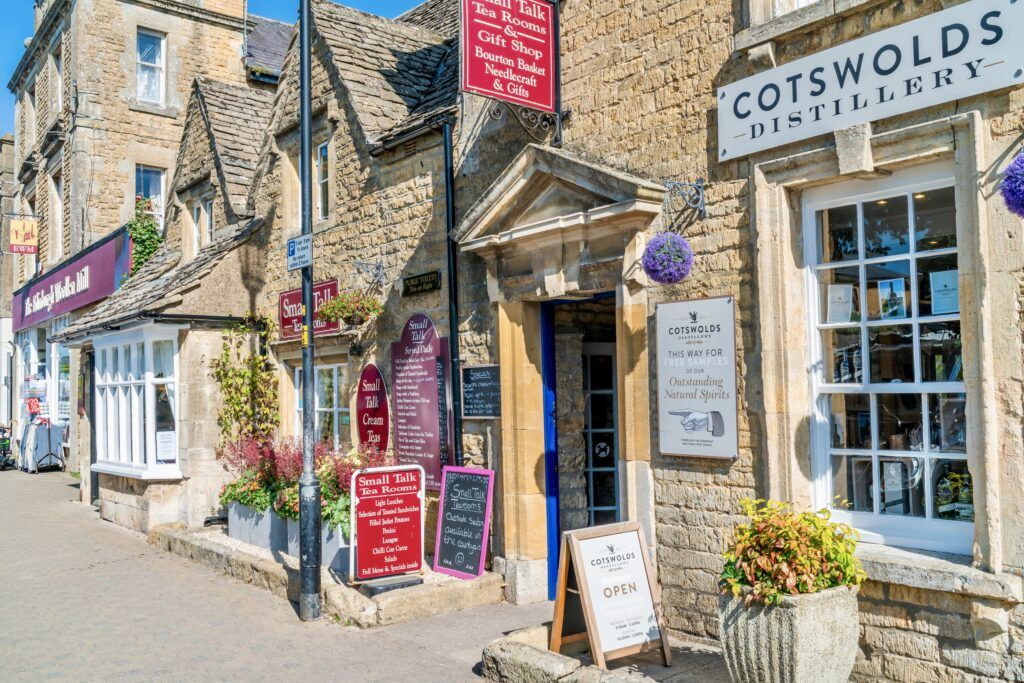
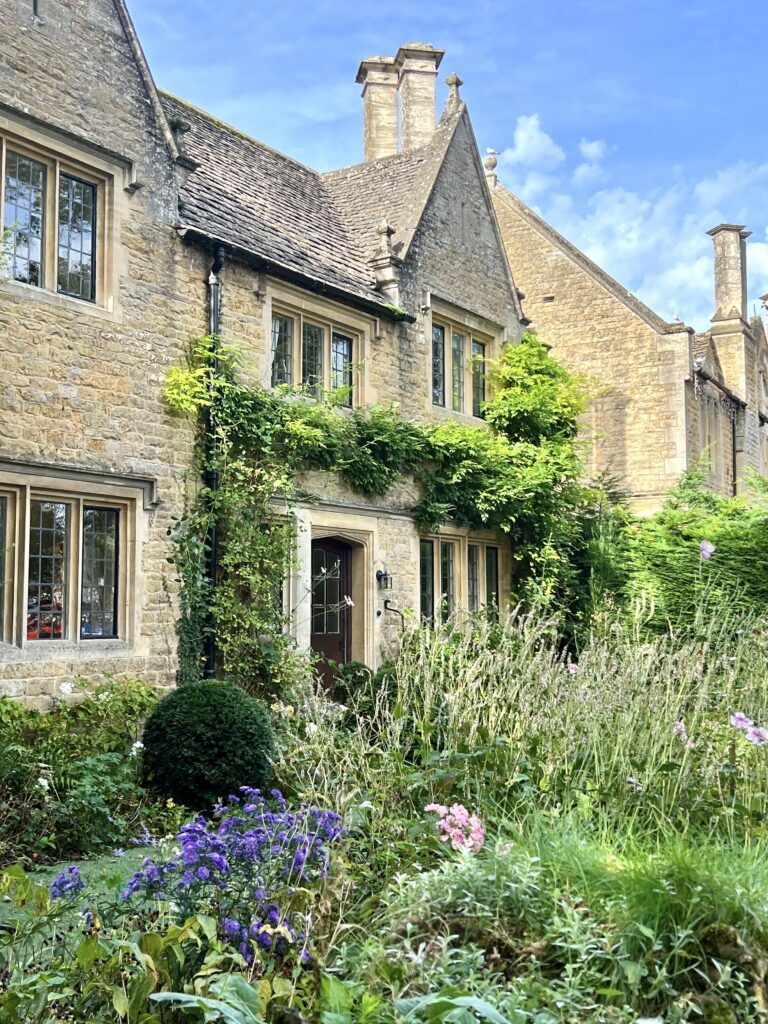
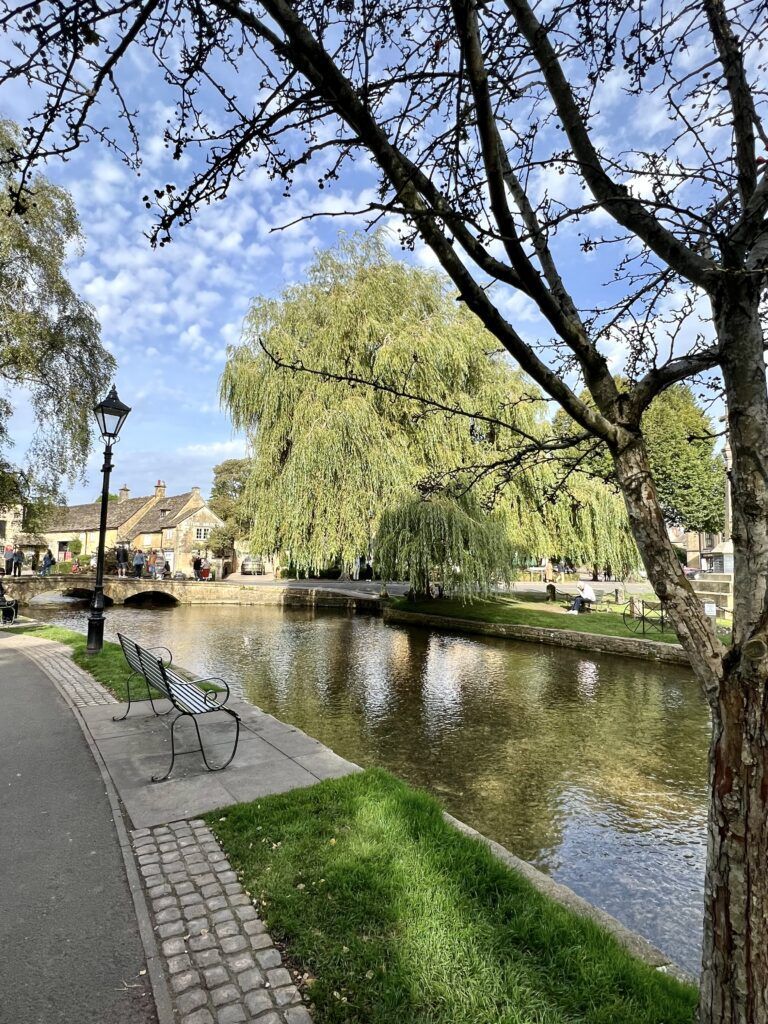
In fact, compared to Bibury, there’s quit a bit to do.
There are perfumeries, bakeries, a fine Christmas store, fudge shops, and candle shops. There’s even a motoring museum and a gin distillery.
I tried the crumbly honeycomb fudge from Roly’s. Very different, and not made from chocolate.
I would break for lunch in Bourton-on-the-Water. There are some really nice options. I dined at the rather romantic Rose Tree restaurants. But I was also tempted by Italian at L’Anatra Italian Kitchen.
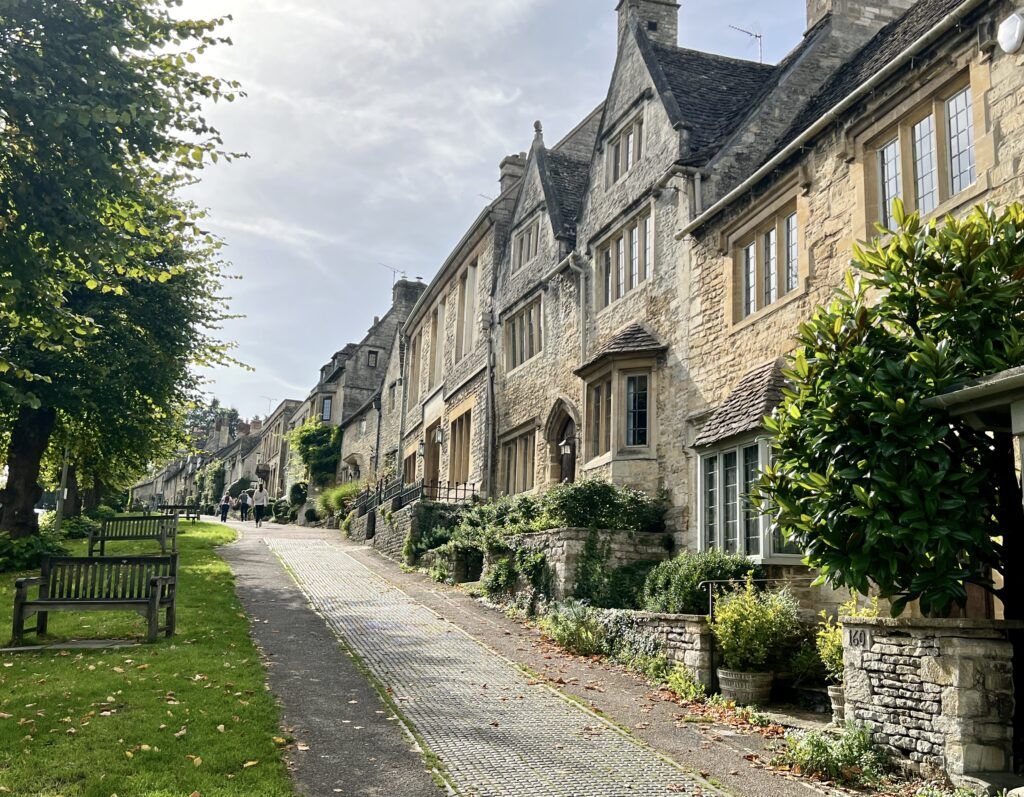
Burford is a medieval stone town that has a Georgian feel. It’s often referred to as the “Gateway to the Cotswolds.”
It’s barely changed in centuries and is renowned for its charming and well-preserved historic architecture.
Its main drag, historic High Street, a is a delight to wander. It’s lined with dignified old homes and independent boutiques.
But be sure to meander through back lanes, taking in the honey-colored stone buildings. And take in the views from a centuries-old three-arched stone bridge straddling the river.
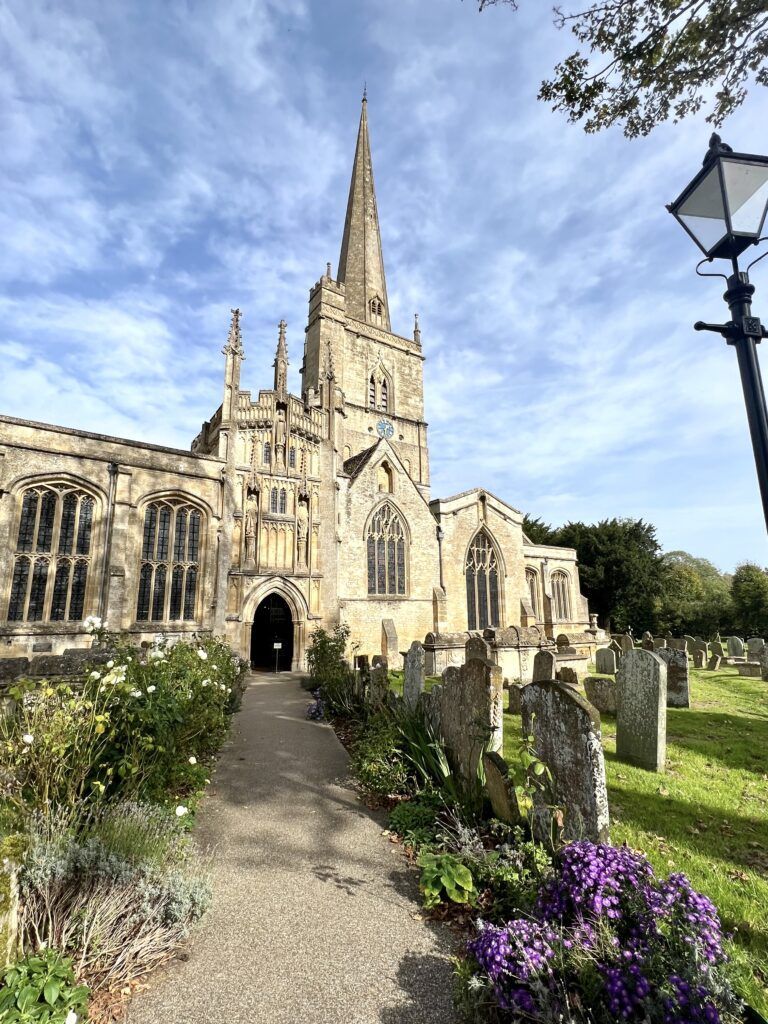
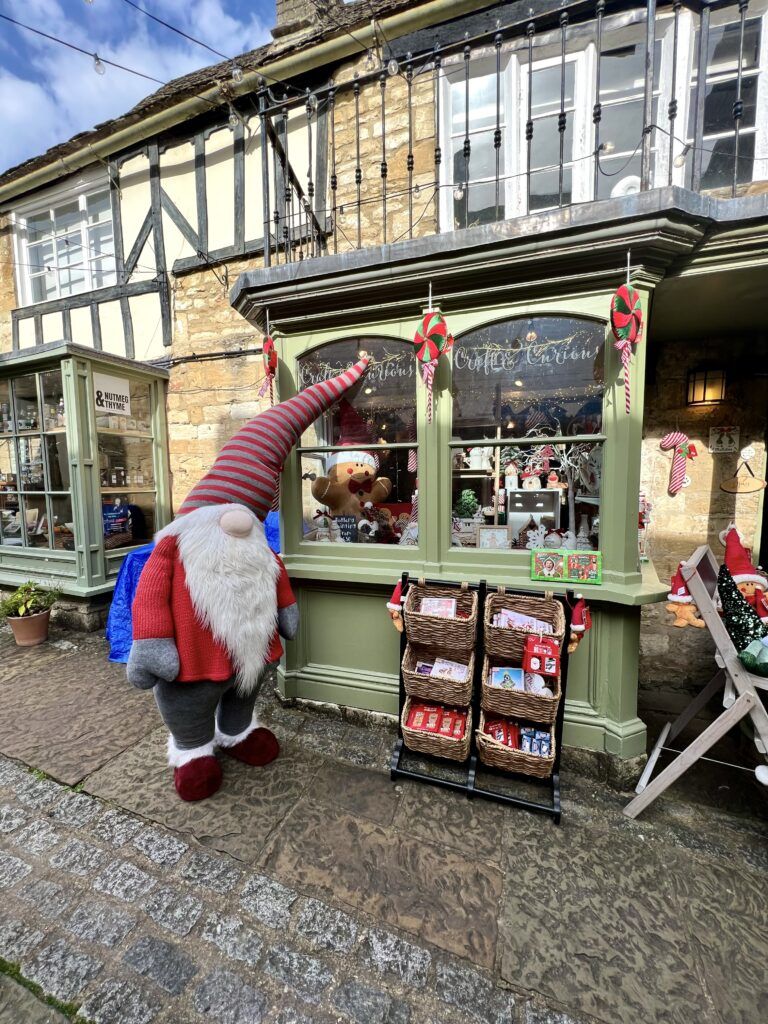
Burford also has a wonderfully preserved church. The lower half of the tower and the west wall were built in around 1170. The church was subsequently enlarged in stages until it was completed in 1475.
Inside, there’s a splendid nave, fan vaulted ceiling, and stained glass windows. And the usual chapels, monuments, and tombs.
I would eat dinner in Burford. I can personally recommend the Lamb Inn. Dating from 1402, it’s a sprawling pub with quaint decor and outside terraces. A waiter told me that the inn is allegedly haunted by ghosts.
If you have any time left in your day, head to the town of Cirencester. There are lots of lovely shops and eateries to explore. The Corinium Museum houses ancient Roman mosaics.
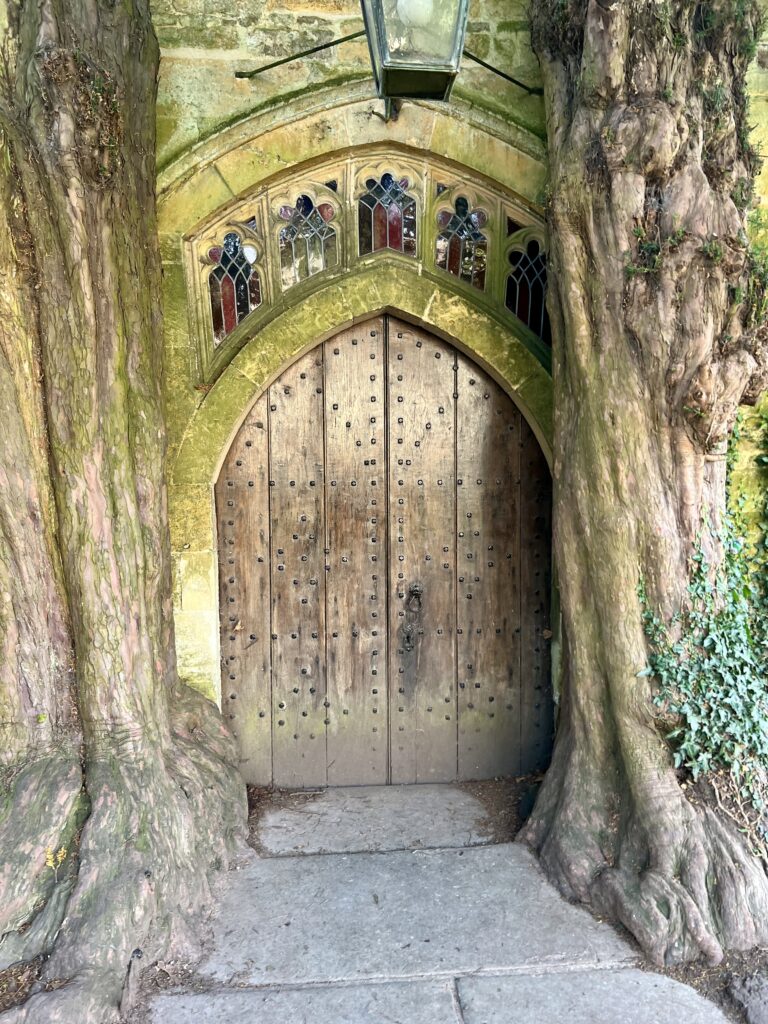
Day 2: Stow-on-the-Wold, Upper Slaughter, Lower Slaughter
Start your day in Stow-on-the-Wold. Explore its historic Market Square, antique shops, and art galleries. The square is bookended with a cross at one end and the old stocks at the other.
Like many Cotswolds towns, Stowe got its wealth from the wool industry. Stow was once famous for its large sheep fairs. 20,000 sheep were traded on a single day.
Today, the locals and tourists are content with the farmers market.
Probably the most famous attractions in Stow is the wooden door of St. Edwards Church. Legend hold that it inspired Tolkien’s Durin Door in the Lord of the Rings series.
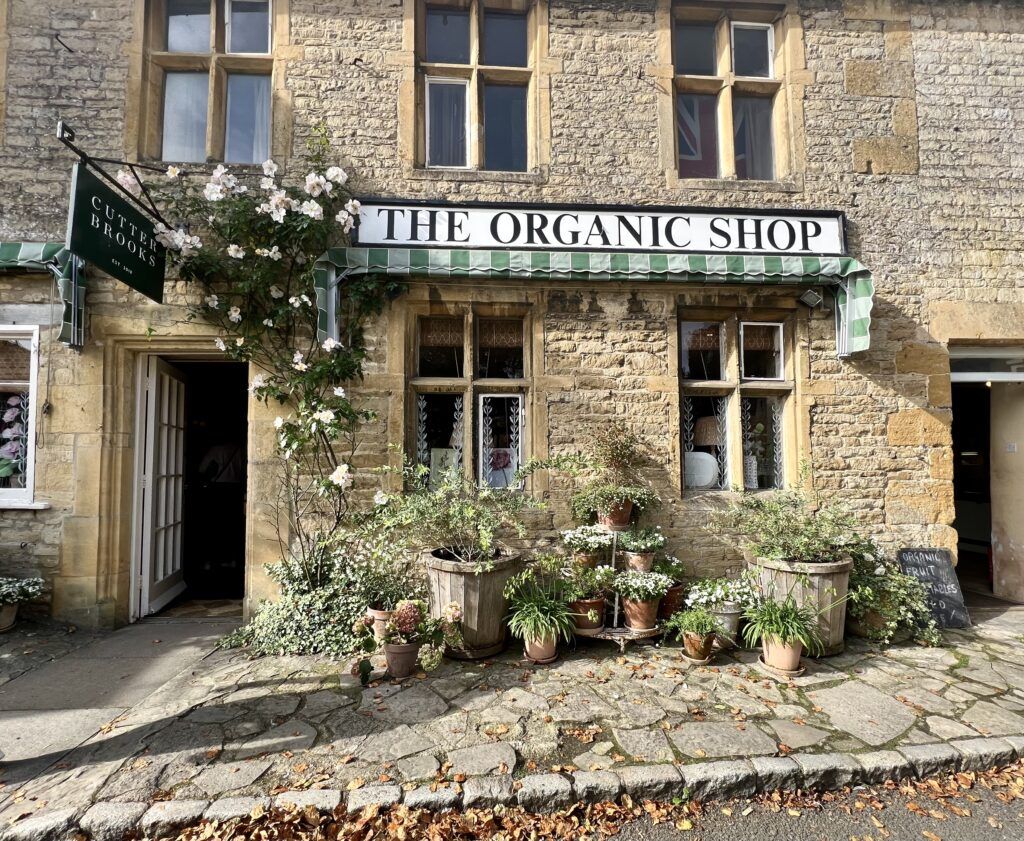
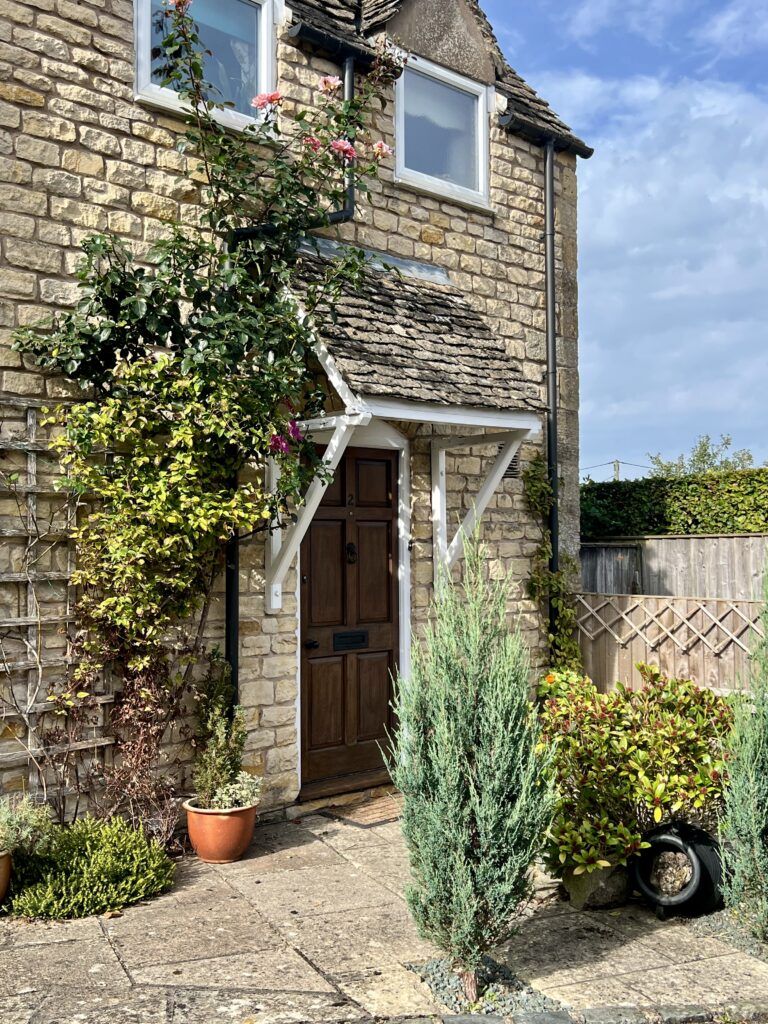
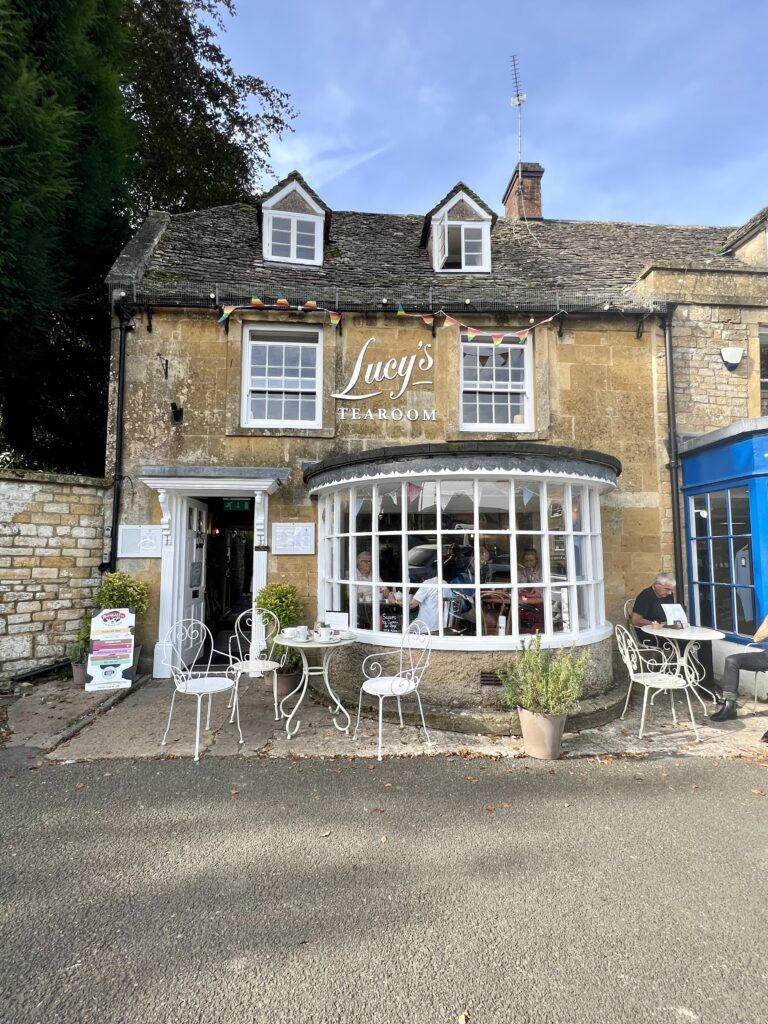
Stow is also famous for hosting the twice a year Stow Horse Fair. Travelers from all over the world descend on the town and parade and trade their horses.
And you’ll want to have tea or breakfast at Lucy’s Tearoom! The cute cafe opens at 10:00 am.
When you’re done admiring Stow, head to the medieval Slaughter villages. The name “slaughter” comes from the Old English word “sloughtre,” which translate to muddy place.
If you are up for it, you can take the 5 mile walk through the countryside.
Upper Slaughter is a tranquil village known for its picturesque cottages. But Lower Slaughter is the real gem.
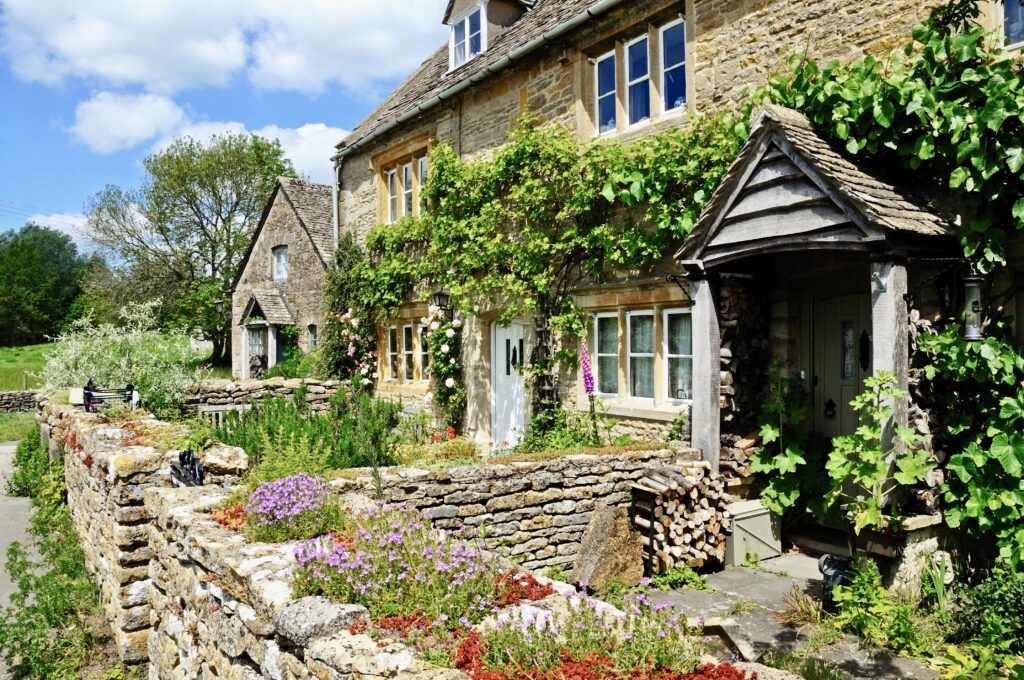
Like its twin, Lower Slaughter equally delightful and known for its scenic beauty.
The village boasts charming stone cottages, a tranquil river running through the village, and beautiful gardens. The river is just below the road level and flanked with flowery footpaths.
It’s best to start in Lower Slaughter by visiting what was voted the “most romantic street in Britain” by Google Street View, Copse Hill Road.
Here, you’ll find many fantastic restaurants, such as the award-winning eatery at The Slaughters Manor House.
The historic Old Mill is a prominent landmark in Lower Slaughter. It was originally a working water mill. Today, The building has been converted into a luxury hotel
If you have any time left in your day, drive to Moreton-in-Marsh. It’s not as quaint as the other villages. But you can enjoy the vibrant market, some historical attractions, and the lovely 17th and 18th century buildings on High Street.
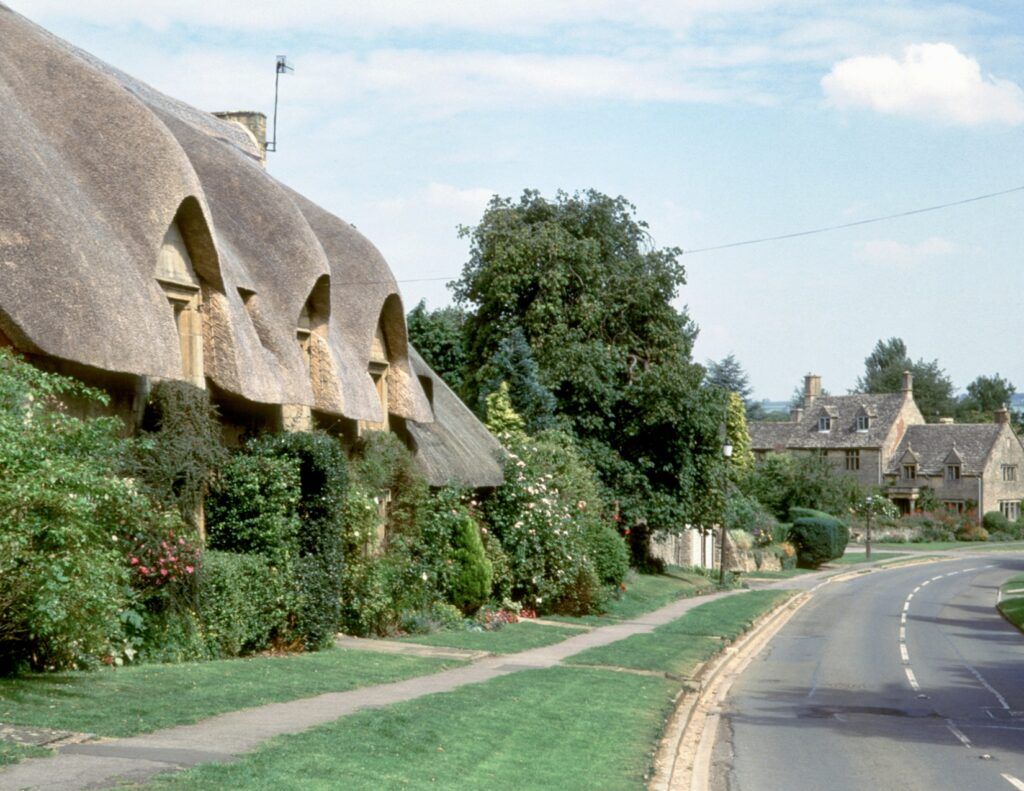
Day 3: Chipping Campden, Broadway, Castle Combe
Begin your day in Chipping Campden. It’s a small market town that dates back to the 14th century. It may be the Cotswold’s prettiest town.
The town is famous admired for the gracefully terraced High Street and historic architecture. You’ll see golden stone homes that vary in size from quaint cottages to grand gables houses.
Many of the homes have thatched roofs. They have to be redone every 25 years or so and it’s not cheap.
Only a few companies do it anymore. And you’re required to hire an ecological archaeologist, just in case they find any new bird species hiding away amongst the thatching.
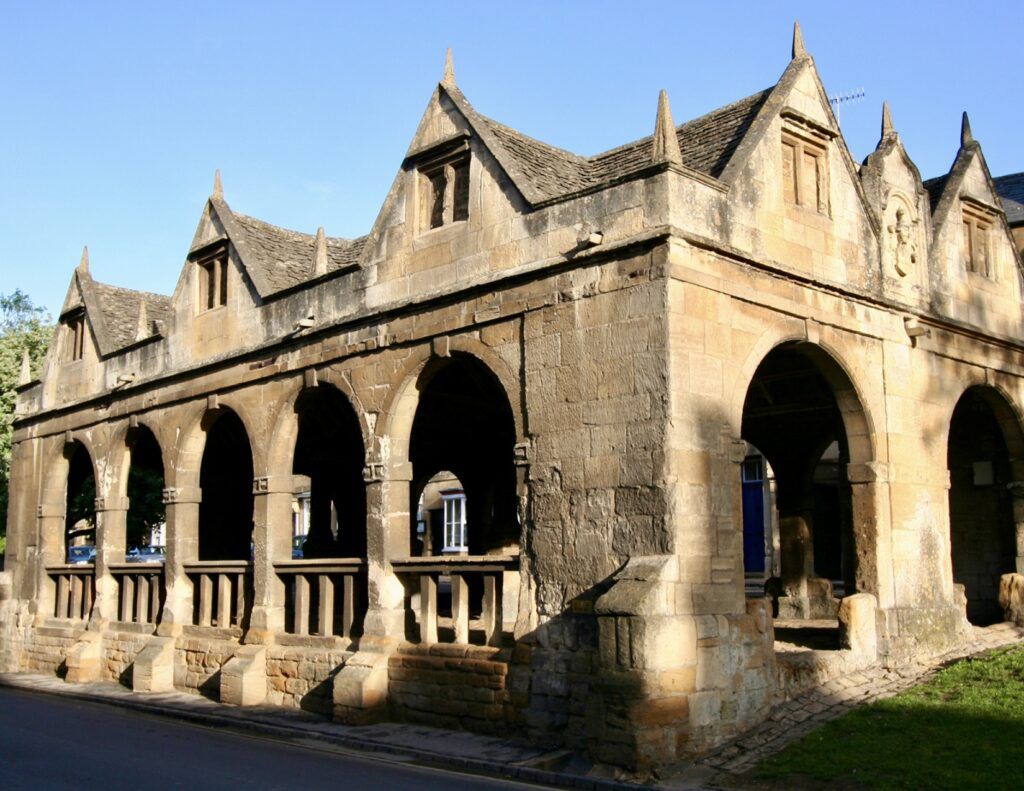
You can’t miss Market Hall. It stands right on High Street. This is where dairy farmers used to sell their produce.
The hall is a bit whacky looking, with open arches and Gothic peaks. It’s a bit of cross between a barn and chapel.
You’ll want to check out St. James Church. It’s a Perpendicular Gothic church where a Doomsday fresco broods over the chancel arch. And the Woolstaplers’ Hall, where medieval sheep merchants once argued over the quality of the flock.
A good place to have brunch or lunch is Badger Hall or the Eight Bells Inn. I tucked into a classic braised lamb shank at the latter.
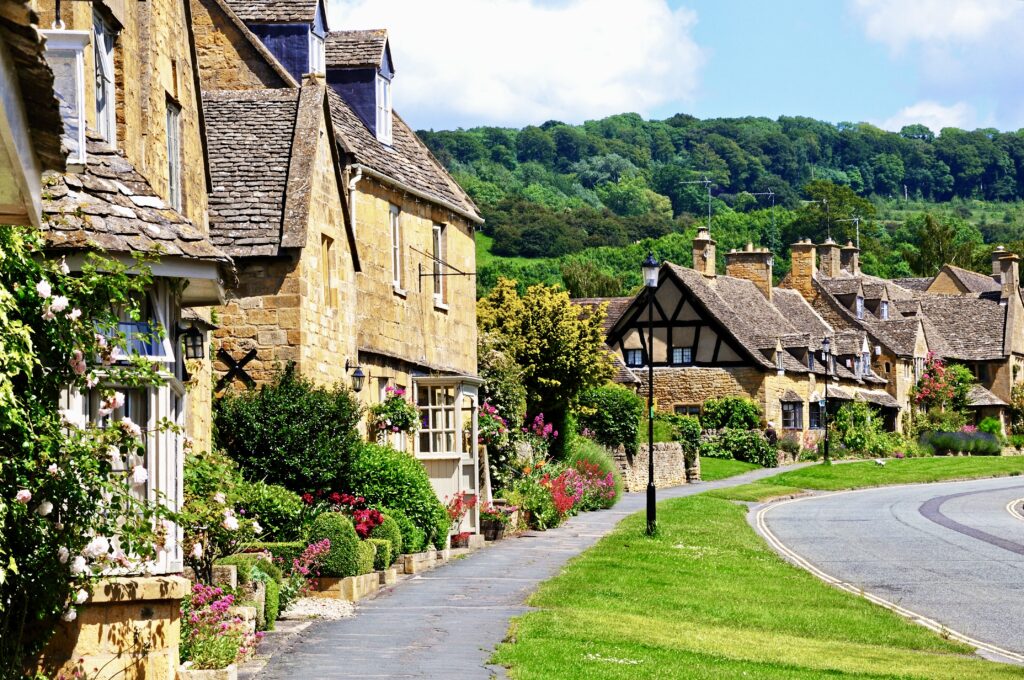
After eating, visit the village of Broadway, just 3-4 miles down the road. It’s a charming hamlet with a diverse range of shops, eateries, art galleries, and luxury hotels.
During the Victorian era, the town attracted the likes of Wiliam Morris and artist John Singer Sargent.
Broadway boasts ancient honey colored buildings from the 16th century and a grassy fringed village center. This earns it the nickname “the jewel of the Cotswolds.”
Broadway is a fun place to visit during the holiday season. The Christmas shopping nights are full of cheer.
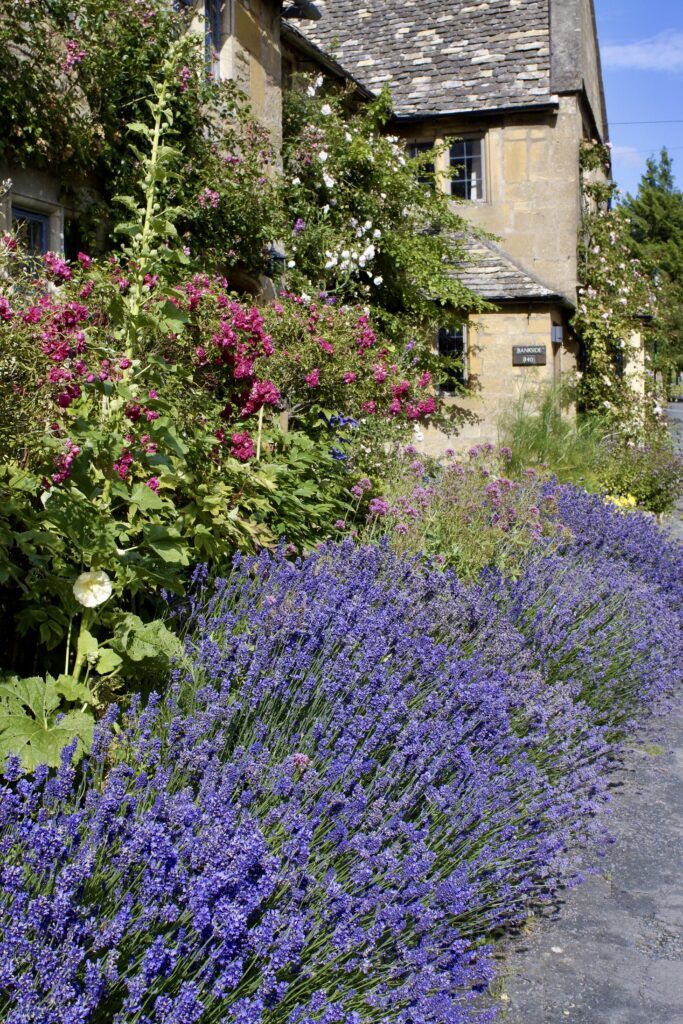
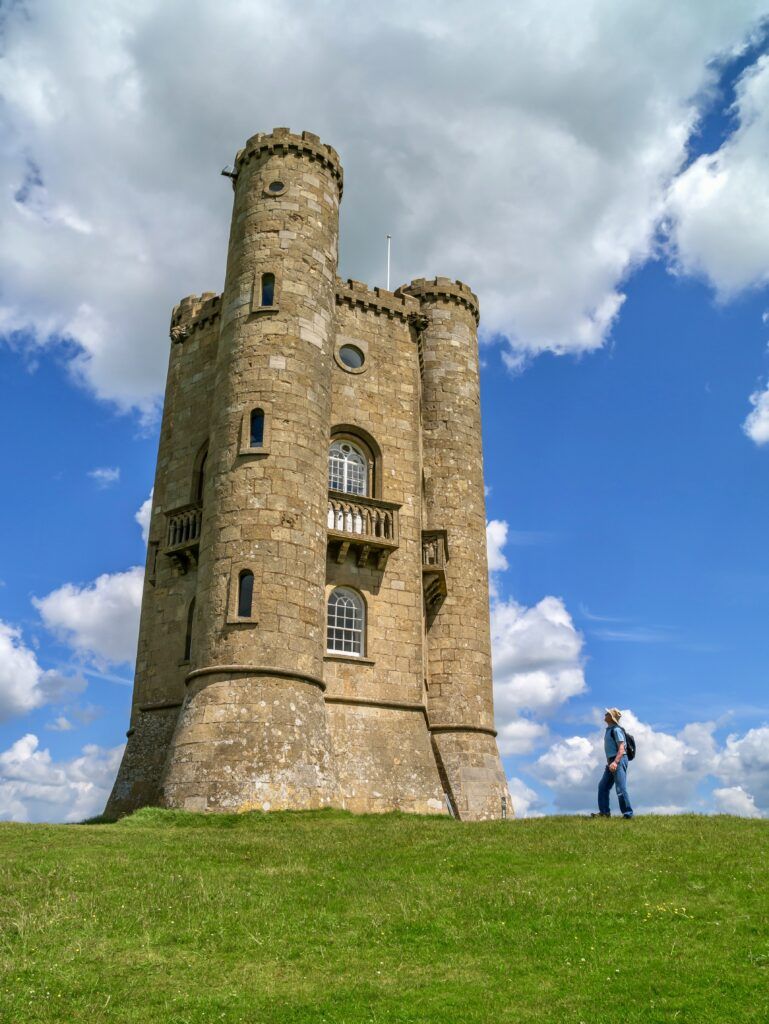
And you definitely have to visit Broadway Tower! It’s the most unique tiny Gothic castle.
It’s a folly really. And you’ll have great views from the rooftop platform at the top.
If you didn’t eat in Chipping Camden, Broadway is full of great places for lunch.
Crown & Trumpet is an award winning pub. And you can get classic fish and chips at Russell’s Fish & Chips or the Snowhill Arms.
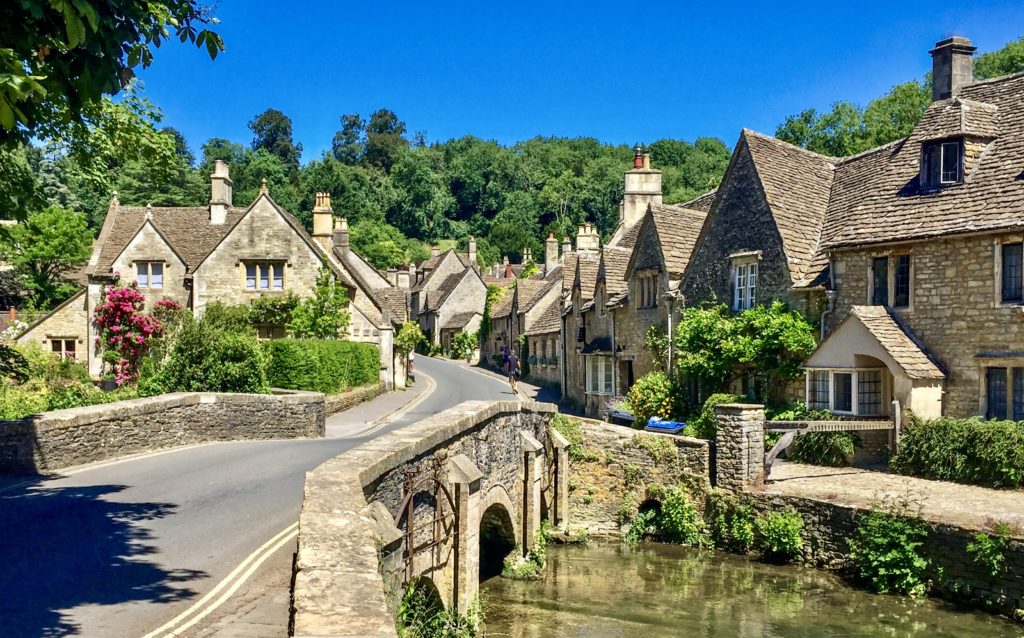
Finally if time remains, head to Castle Combe. It’s a bit of a hike from Broadway because it’s so far south in the Cotswolds. But it’s eminently worth visiting.
This town is an adorable jigsaw‐puzzle painter’s vision of an English village.
Laid out in a valley alongside a rushing stream, the town has slate roofed stone cottages and picturesque shop signs.
The village is home to the beautiful St. Andrew’s Church, which features medieval architecture and a peaceful churchyard.
Have afternoon tea at the Old Rectory Tearoom or dinner at the Manor House, a posh hotel.
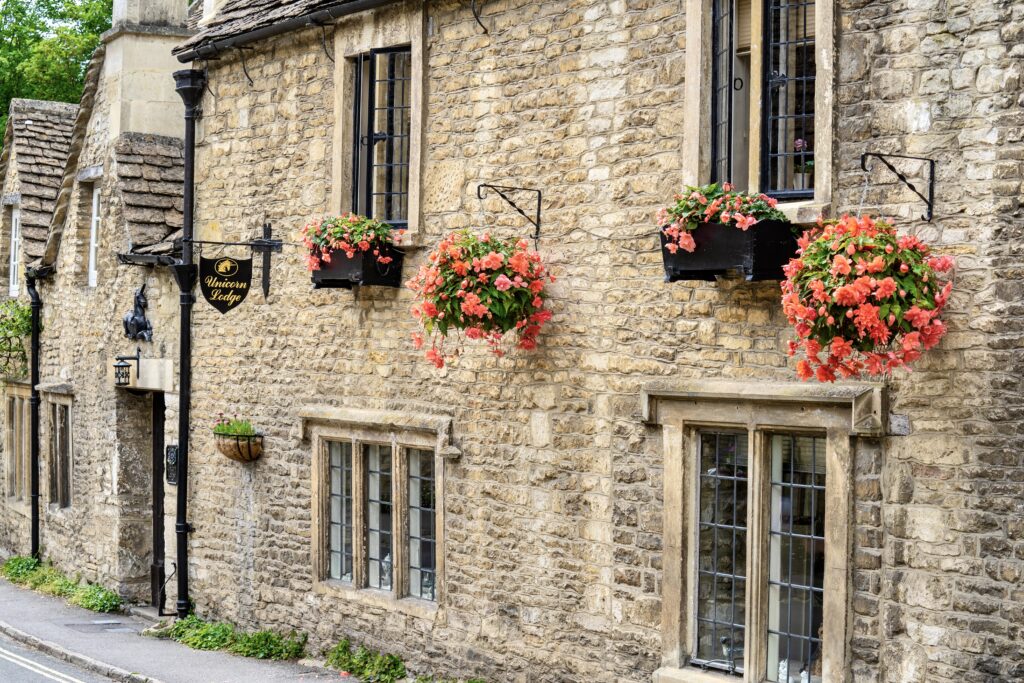
Tips For A 3 Day Cotswolds Itinerary
How To Get To the Cotswolds
You can drive directly from London to the Cotswolds. The journey takes around 2 to 2.5 hours.
You can also take the train to a city like Cheltenham, Moreton-in-Marsh or even Oxford and pick up your car there.

How To Get Around The Cotswolds
Having a car in the Cotswolds is key. You’ll have both greater flexibility and convenience.
Some of the smaller and more remote Cotswold villages have limited or infrequent public transportation options.
Without being tied to a fixed schedule with public transport, you can add in another village or stop to see a castle as you’re driving.
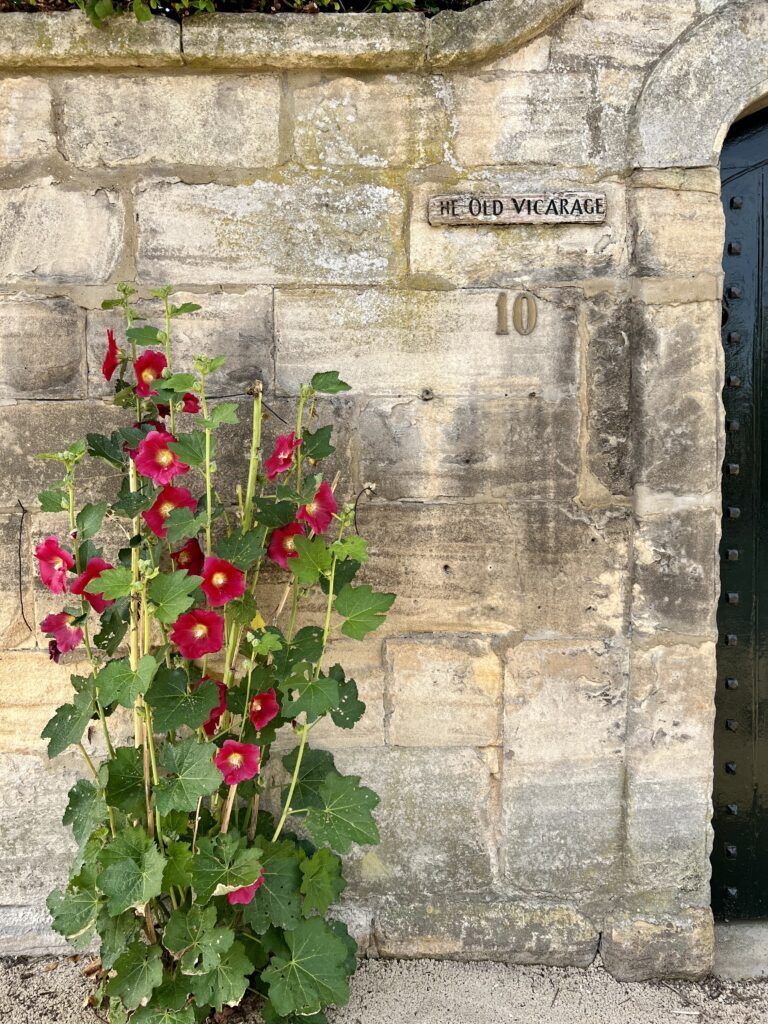
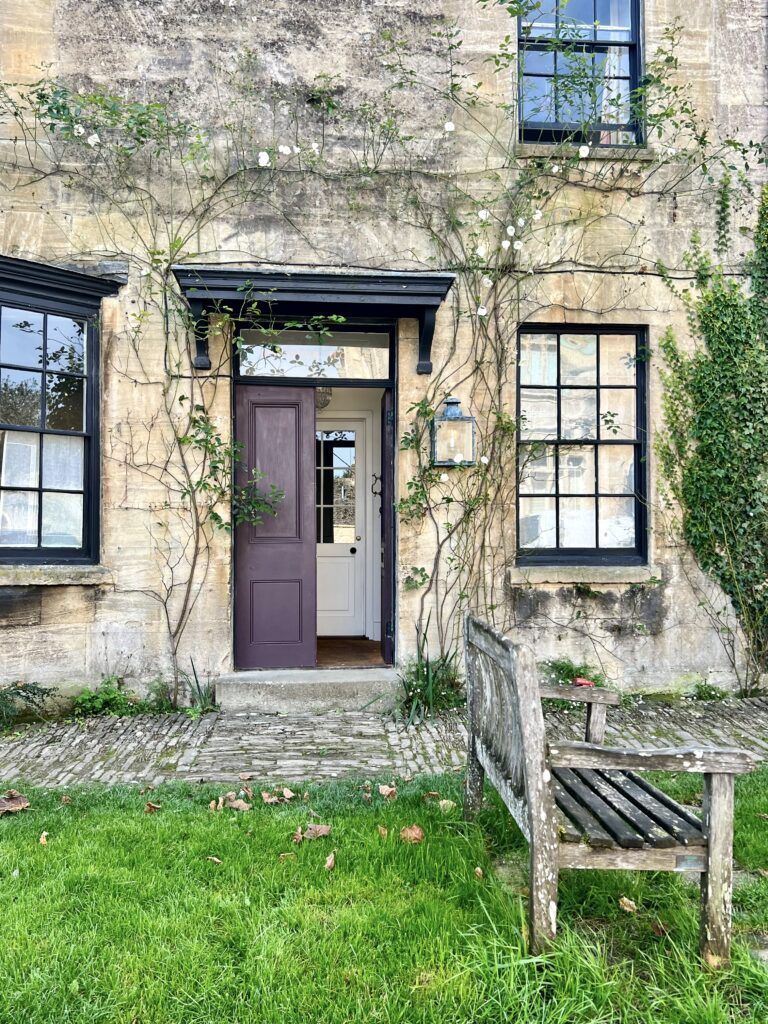
Where To Stay In The Cotswolds, The Best Base
The Cotswolds is a fairly large area, so you’ll want to stay somewhere central. I would opt for Stow-on-the-Wold or Chipping Campden.
But Bibury is a good option too. And if you end in Castle Combe, you can overnight there.
Here are some hotels I recommend in these towns. I stayed at the Old Stocks Inn in Stow-on-the-Wold and was very happy.
Stow-on the-Wold:
Britain’s oldest inn is the Porch House, open for 11 centuries. There are wooden beams, stone walls, and a fantastic gastropub.
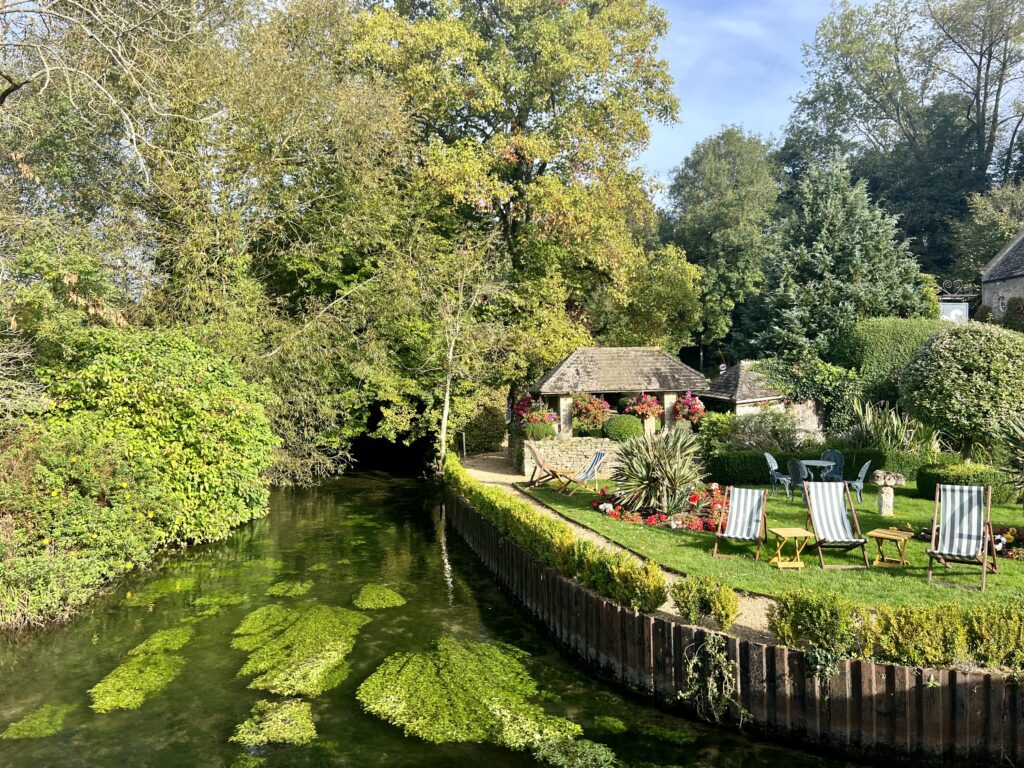
The Old Stocks Inn is a cute boutique hotel that’s another great choice. It’s a fully renovated 17th century coaching inn.
Chipping Campden: The Cotswolds House Hotel is a bespoke Regency era hotel with a fine dining restaurant and lovely gardens. For a cute boutique hotel, check out Jasmine Cottage.
Bibury: The Swan Hotel is the top spot here. The ivy clad hotel has 22 bedrooms and 4 cottages suites. It has a restaurant that I mentioned above and riverside gardens.
Castle Combe: The Manor House Hotel is a great choice for luxury and pampering.
More Than 3 Days?
If you have extra time in the region, consider visiting Blenheim Palace near the northeast corner of the Cotswolds or Cheltenham. You could also spend a day in the lovely towns of Bath or Oxford.
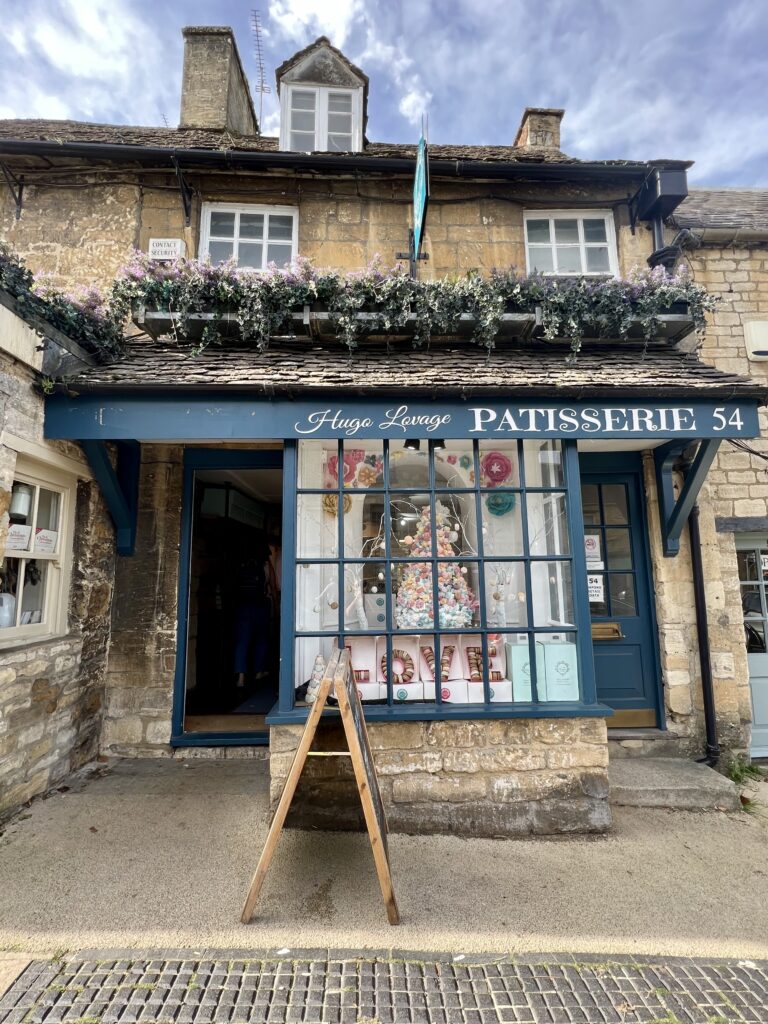
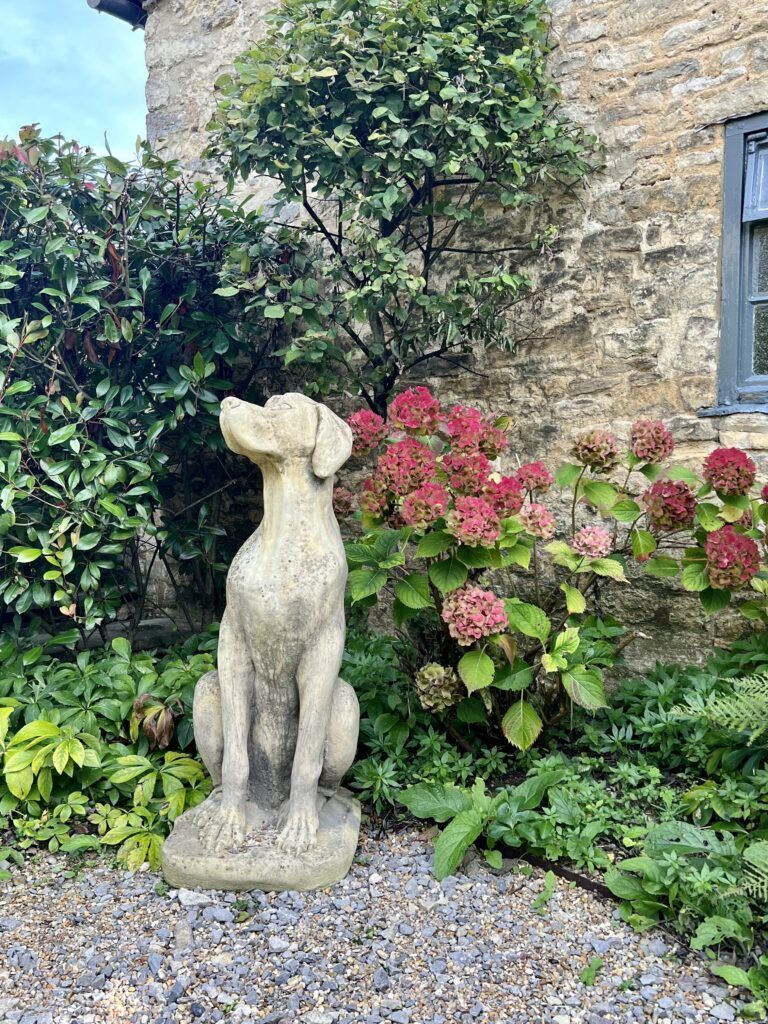
I hope you’ve enjoyed my 3 days in the Cotswolds itinerary. You may enjoy these other England travel guides and resources.
- 3 Day Itinerary for London
- 5 Day Itinerary for London
- Hidden Gems in London
- 30 Day Trips from London
- Best Museums in London
- One Day In Canterbury Itinerary
- One Day in Oxford Itinerary
- One Day In Stratford-upon-Avon
- Guide to Westminster Abbey
- Guide to St. Paul’s Cathedral
If you want to spend 3 days in the Cotswolds, pin it for later.

